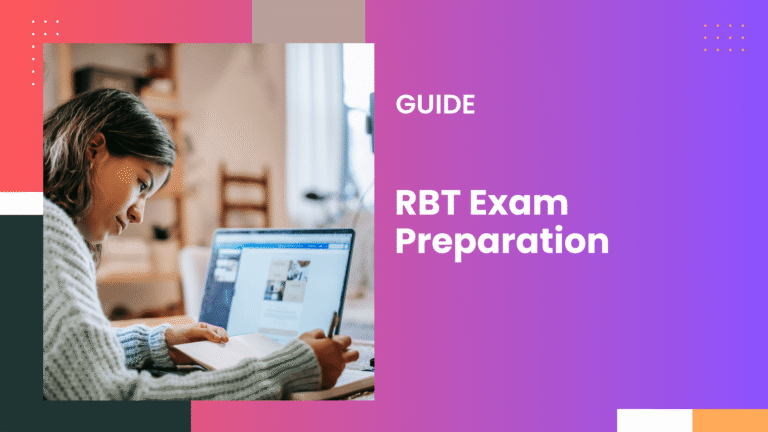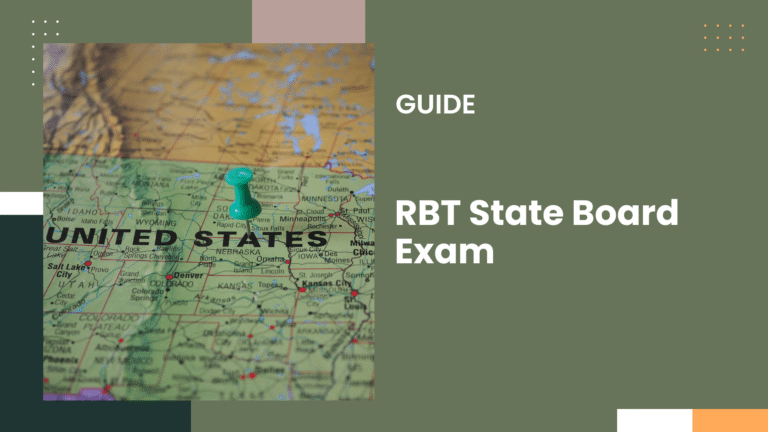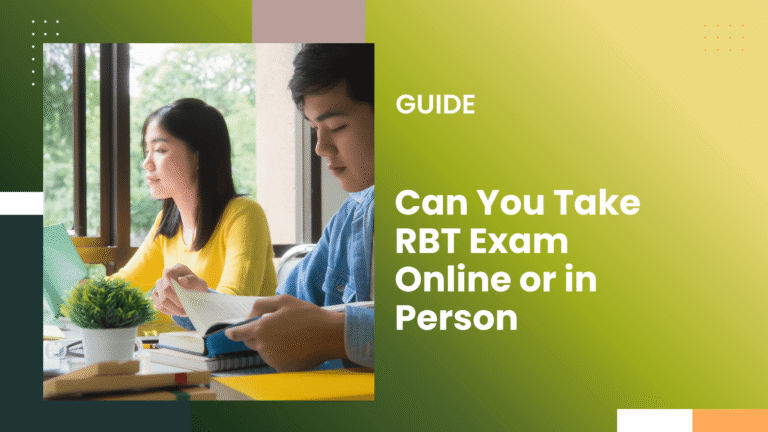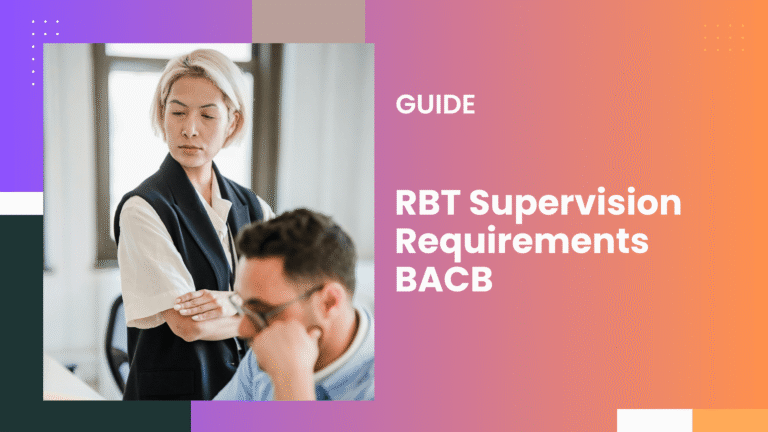Who May Conduct the RBT Competency Assessment?
Only BACB-certified professionals, BCBA, BCBA-D, or BCaBA, who have completed the 8-hour supervision training can conduct the RBT Competency Assessment. Assistants may help, but the Responsible Assessor remains fully accountable.
Only professionals approved by the Behavior Analyst Certification Board (BACB) can run the RBT Competency Assessment. Assistants may support the process, but the Responsible Assessor retains full authority and accountability for the outcome.
Key Point: While assistants can help with observation, feedback, and logistics, the lead professional reviews the full evaluation, signs off on results, and takes complete responsibility.
1) Responsible Assessor Qualifications
The person in charge — the Responsible Assessor — must hold one of the following credentials:
- BCBA (Board Certified Behavior Analyst)
- BCaBA (Board Certified Assistant Behavior Analyst)
- BCBA-D (Doctoral-level BCBA)
Required Training: They must complete the 8-hour supervision training before overseeing your assessment. Without that training, they cannot legally conduct it.
Conflict-of-Interest Safeguards
The Responsible Assessor cannot:
- Be related to you
- Be your direct employee
- Be your subordinate
This ensures fairness, prevents conflicts of interest, and keeps the process professional. Even if assistants participate, the Responsible Assessor makes the final decision and signs off on all results.
2) Assistant Assessor Roles
Assistant assessors can help with parts of the assessment, but their role is always supportive. They may:
- Watch and take notes while you demonstrate skills
- Give feedback during practice
- Handle logistics to keep the process smooth
Assistants do not need to be BCBAs or BCaBAs, but they must remain under direct supervision at all times.
Authority Limits: Assistants cannot pass or fail you. Only the Responsible Assessor can make that determination.
Employment and Relationship Restrictions
| Allowed | Not Allowed |
|---|---|
| Same employer or contractual relationship | Family members |
| BCBA/BCaBA supervisor within the organization | Subordinates |
| Multiple assessors from the same organization | Independent BCBAs with unrelated clients |
The BACB has very clear rules to avoid conflicts of interest. Your assessor:
- Cannot be related to you
- Cannot be your employee or subordinate
- Must be tied to you professionally through the same organization
This means both you and the assessor must share a legitimate connection, like being employed by or contracted with the same clinic.
If an outside professional conducts the assessment, there must be a formal contract linking you, them, and the organization serving the client.
Skipping this step risks invalidating your assessment; you’d have to do the whole thing over again.
How is the RBT Competency Assessment Conducted?
The RBT Competency Assessment is hands-on, not a written test. You’ll demonstrate that you can apply Applied Behavior Analysis (ABA) skills in real or simulated settings.
Where the Evaluation Happens
- In-person at a clinic, school, or home
- Online through approved role-play formats
Step-by-Step Process
Areas Tested
| Area Tested | Example Skills |
|---|---|
| Measurement | Collecting and graphing behavior data |
| Assessment | Preference assessments |
| Skill Acquisition | Teaching new skills with reinforcement |
| Behavior Reduction | Implementing intervention plans |
| Professional Conduct | Ethics, client dignity |
Expect the session to feel practical and interactive. Your goal isn’t to memorize—it’s to show you can do the work.
Assessment Process and Organizational Requirements
The RBT assessment is tightly structured to protect the integrity of ABA. Both the assessor and the organization must follow BACB rules.
The Responsible Assessor must:
- Be credentialed (BCBA, BCaBA, or BCBA‑D)
- Have completed supervision training
- Guide you through the 20 required RBT tasks
Their job isn’t just checking boxes—they ensure you apply training correctly and can handle real‑world scenarios.
The organization running the assessment must be linked to the client used in your evaluation. This ensures the assessment reflects real ABA services.
Some ABA companies require employment before they’ll run the assessment, while others may charge a fee. Both are acceptable as long as the organizational link is valid.
- Assistant assessors may observe or help, but they don’t need BACB credentials
- Final accountability always rests with the Responsible Assessor
- Payment for the service is allowed, but it doesn’t count as employment
This structure protects fairness and ensures only qualified professionals make final decisions.
Assessment Methods and Key Considerations
Here it is
The assessment checks not only your technical skills but also your ability to act ethically and professionally.
- Role-Play – Mock scenarios like prompting, preference assessments, or teaching trials.
- Direct Observation – Real client sessions showing teaching, data collection, or intervention plans.
You may switch between both formats depending on client availability. Practicing in multiple settings is critical.
Before the assessment, you must:
- Complete the 40-hour RBT training
- Show both continuous (frequency, duration) and discontinuous (partial interval, momentary time sampling) measurement
- Demonstrate documentation, reporting, and data collection skills
Mock assessments with supervisors can help you practice switching between methods like discrete-trial and naturalistic instruction.
Passing requires more than correct data collection. You must:
- Treat clients with dignity
- Respect confidentiality
- Follow the BACB ethics code
- Use the least restrictive procedures
- Respond professionally to unexpected scenarios
Expect questions about tricky cases—like client refusal or parent requests that go against a plan. Your answers must show you can protect the client.






